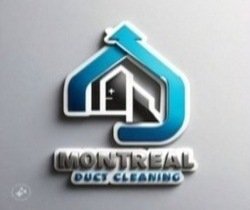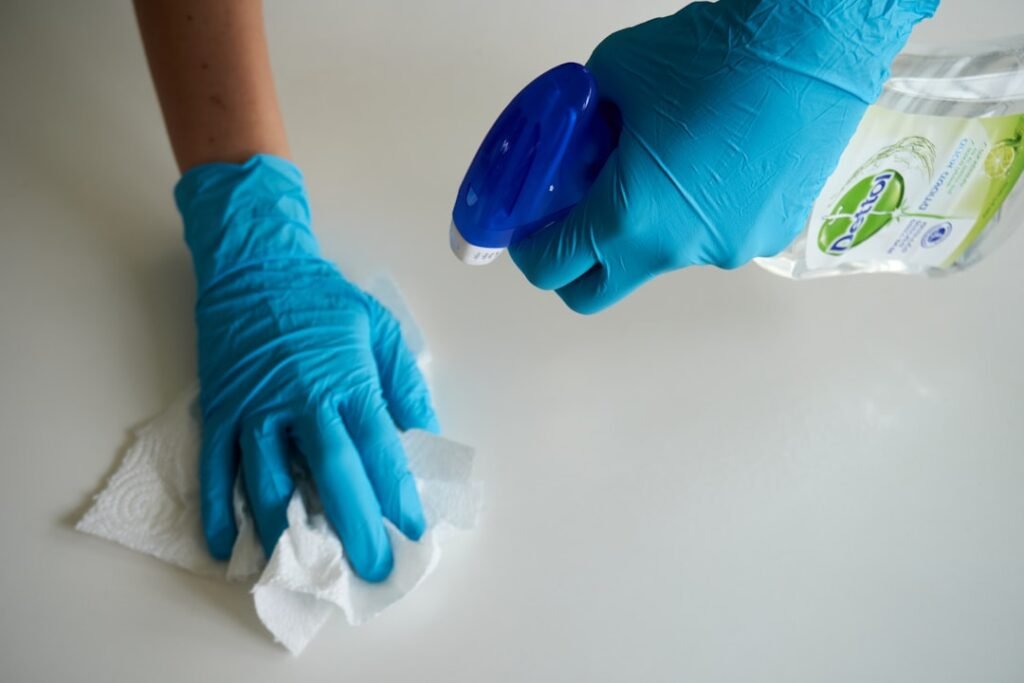Air duct cleaning is a critical maintenance task that often goes overlooked in many Quebec homes. The climate in Quebec, characterized by long, harsh winters and humid summers, necessitates a well-functioning heating, ventilation, and air conditioning (HVAC) system. Over time, dust, allergens, and other contaminants accumulate in the air ducts, which can lead to a range of health issues and decreased efficiency of the HVAC system.
In a province where residents spend a significant amount of time indoors due to extreme weather conditions, ensuring clean air circulation is paramount for maintaining a healthy living environment. Moreover, the buildup of debris in air ducts can significantly impact energy efficiency. When ducts are clogged with dust and other particles, the HVAC system must work harder to circulate air throughout the home.
This increased workload not only leads to higher energy bills but can also shorten the lifespan of the system. In Quebec, where energy costs can be substantial, regular air duct cleaning can result in significant savings over time. Additionally, clean air ducts contribute to better indoor air quality, reducing the risk of respiratory issues and allergies, which is particularly important for families with children or elderly members.
Key Takeaways
- Regular air duct cleaning is important for maintaining indoor air quality and preventing health issues in Quebec homes.
- Pre-inspection and assessment of the air duct system is crucial to identify any issues and determine the best cleaning approach.
- Setting up the work area and protecting the home is necessary to prevent dust and debris from spreading during the cleaning process.
- Removing and cleaning the registers and grilles helps to improve airflow and prevent the buildup of dust and allergens.
- Cleaning the ductwork using professional tools and techniques ensures thorough removal of dust, debris, and contaminants from the system.
Pre-Inspection and Assessment of the Air Duct System
Before any cleaning begins, a thorough pre-inspection and assessment of the air duct system is essential. This initial step allows professionals to identify specific issues that may be present within the ductwork. Technicians typically use specialized cameras and tools to inspect the ducts for signs of contamination, blockages, or damage.
For instance, if mold is detected, it may indicate moisture issues within the ductwork that need to be addressed before cleaning can take place.
Additionally, any structural issues such as loose connections or damaged ducts will be noted. This comprehensive evaluation ensures that the cleaning process is tailored to the specific needs of the home and that any underlying problems are addressed promptly.
Setting up the Work Area and Protecting the Home

Once the assessment is complete, setting up the work area is the next crucial step in the air duct cleaning process. Professionals take great care to protect the home from potential damage during cleaning. This involves laying down protective coverings on floors and furniture to prevent dust and debris from spreading throughout the living space.
By creating a controlled environment, technicians can ensure that the cleaning process is efficient and minimizes disruption to the homeowner’s daily life. In addition to physical protection, technicians will also set up specialized equipment designed to contain dust and debris during the cleaning process. High-powered vacuums are often used to create negative pressure within the duct system, which helps to prevent contaminants from escaping into the home.
This setup not only protects the living space but also enhances the effectiveness of the cleaning process by ensuring that all debris is captured and removed from the ducts.
Removing and Cleaning the Registers and Grilles
The next step involves removing and cleaning the registers and grilles that cover the air ducts. These components often accumulate a significant amount of dust and grime over time, which can contribute to poor indoor air quality. By removing them from their positions, technicians can thoroughly clean each register and grille using specialized brushes and cleaning solutions designed to eliminate stubborn dirt and allergens.
Cleaning registers and grilles is not just about aesthetics; it plays a vital role in ensuring optimal airflow throughout the HVAC system. Clogged or dirty registers can restrict airflow, leading to uneven heating or cooling in different areas of the home. After cleaning, these components are reinstalled carefully to ensure they fit securely and function properly.
This attention to detail helps maintain an efficient HVAC system while also enhancing the overall appearance of each room.
Cleaning the Ductwork Using Professional Tools and Techniques
With registers and grilles cleaned, attention turns to the ductwork itself. Professional air duct cleaning employs advanced tools and techniques that are specifically designed for this purpose. One common method involves using rotary brushes that scrub the interior surfaces of the ducts while simultaneously vacuuming up debris.
This dual-action approach ensures that even stubborn buildup is effectively removed. In addition to rotary brushes, high-powered vacuums equipped with HEPA filters are utilized to capture fine particles that may be released during cleaning. These vacuums create negative pressure within the duct system, which prevents dust from escaping into the home environment.
The combination of these professional tools allows for a thorough cleaning process that significantly improves indoor air quality and enhances HVAC efficiency.
Cleaning the Furnace and Air Handler

An often-overlooked aspect of air duct cleaning is the importance of cleaning the furnace and air handler. These components play a crucial role in circulating air throughout the home, and if they are dirty or clogged with debris, it can severely impact system performance. During this phase of cleaning, technicians will inspect both the furnace and air handler for dust buildup, dirt accumulation, or any signs of wear and tear.
Cleaning these components typically involves removing access panels to reach internal parts such as blower motors and heat exchangers. Technicians will use specialized brushes and vacuums to remove dust and debris from these areas thoroughly. By ensuring that both the furnace and air handler are clean, homeowners can expect improved airflow, enhanced energy efficiency, and a longer lifespan for their HVAC system.
Sanitizing and Deodorizing the Air Duct System
After thorough cleaning has been completed, sanitizing and deodorizing the air duct system becomes essential for maintaining a healthy indoor environment. Over time, odors can become trapped within ductwork due to various factors such as mold growth or pet dander. To combat this issue, professionals often apply specialized sanitizing agents that eliminate bacteria and mold spores while neutralizing unpleasant odors.
The sanitization process not only improves indoor air quality but also provides peace of mind for homeowners concerned about allergens or contaminants lingering in their living spaces. Additionally, deodorizing agents can be introduced into the duct system to leave behind a fresh scent without masking odors with artificial fragrances. This step ensures that once cleaning is complete, homeowners can enjoy cleaner air free from unwanted smells.
Post-Inspection and Quality Assurance
The final stage of air duct cleaning involves a post-inspection to ensure that all work has been completed to a high standard. Technicians will conduct a thorough examination of both the cleaned ducts and associated components to verify that no debris remains and that everything is functioning correctly. This quality assurance step is crucial for confirming that homeowners receive the full benefits of their investment in air duct cleaning.
During this post-inspection phase, technicians may also provide homeowners with recommendations for ongoing maintenance practices that can help keep their air ducts clean in between professional cleanings. This could include tips on changing filters regularly or using high-efficiency particulate air (HEPA) filters in their HVAC systems. By empowering homeowners with knowledge about maintaining their systems, professionals help ensure long-term benefits from their air duct cleaning services while fostering a healthier indoor environment overall.
If you are interested in learning more about the benefits of professional air duct cleaning versus DIY methods, check out this informative article on Professional Air Duct Cleaning vs DIY: Which is Better?. This article delves into the advantages of hiring a professional service for optimal results in Quebec homes. Additionally, for those looking to improve indoor air quality and prevent potential hazards, consider reading about the importance of dryer vent cleaning in this article on Top 10 Reasons Why Air Duct Cleaning is Essential for Your Health.
FAQs
What is the 7-step professional air duct cleaning process?
The 7-step professional air duct cleaning process is a comprehensive method used to thoroughly clean and maintain the air ducts in a home. It involves a series of steps to remove dust, debris, and contaminants from the ductwork to improve indoor air quality and HVAC system efficiency.
What are the benefits of professional air duct cleaning?
Professional air duct cleaning can improve indoor air quality, reduce allergens and irritants, enhance HVAC system efficiency, and prolong the lifespan of the system. It can also help to remove unpleasant odors and create a cleaner and healthier living environment.
How often should air ducts be cleaned?
The frequency of air duct cleaning can vary depending on factors such as the size of the home, the presence of pets, and the level of indoor air pollution. In general, it is recommended to have air ducts cleaned every 3 to 5 years. However, homes with specific conditions may require more frequent cleaning.
What equipment is used in the professional air duct cleaning process?
Professional air duct cleaning typically involves the use of specialized equipment such as high-powered vacuums, rotary brushes, and air whips. These tools are designed to dislodge and remove debris from the ductwork, ensuring a thorough cleaning process.
Is professional air duct cleaning necessary for all homes?
While professional air duct cleaning can benefit many homes, it may not be necessary for all. Homes with excessive dust, pet dander, or mold growth may benefit the most from air duct cleaning. It is best to consult with a professional to determine if cleaning is necessary for a specific home.
How long does the professional air duct cleaning process take?
The duration of the professional air duct cleaning process can vary depending on the size of the home and the level of contamination in the ductwork. On average, the process can take anywhere from 2 to 4 hours to complete.
What should homeowners look for in a professional air duct cleaning service?
When selecting a professional air duct cleaning service, homeowners should look for a company that is licensed and insured, uses industry-standard equipment, and follows the National Air Duct Cleaners Association (NADCA) guidelines. It is also important to inquire about the specific steps and techniques used in the cleaning process.


